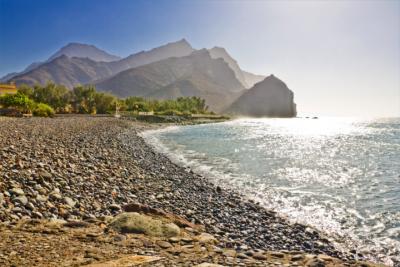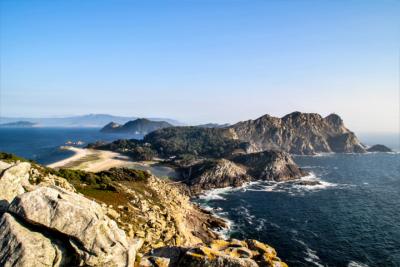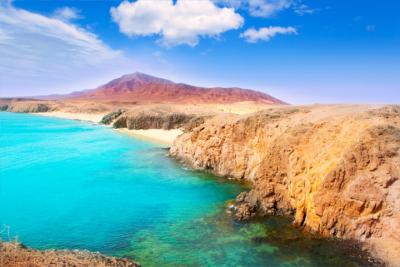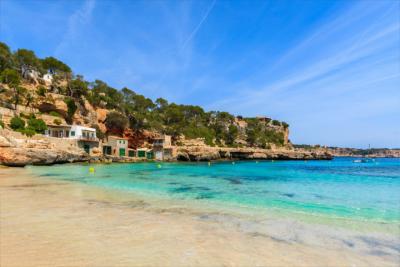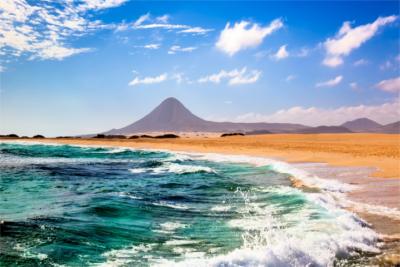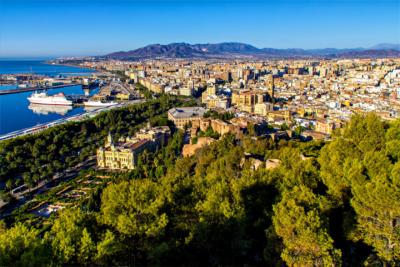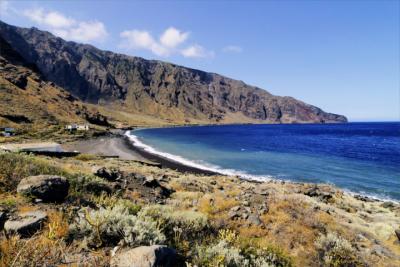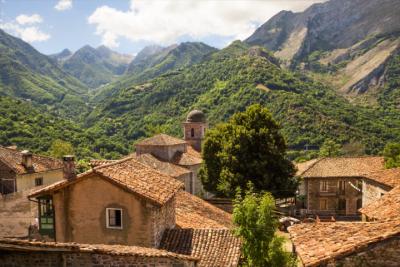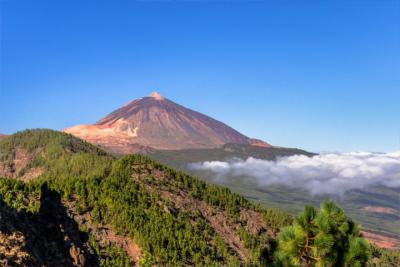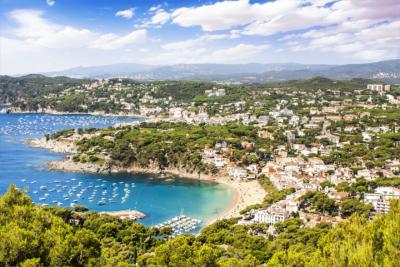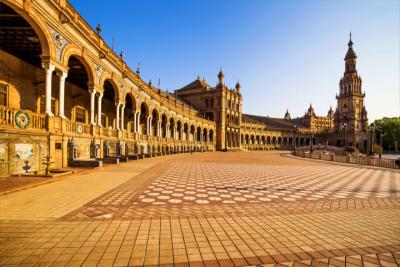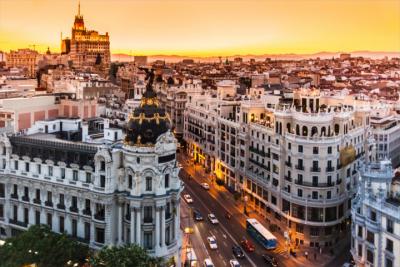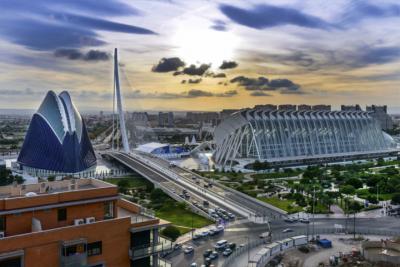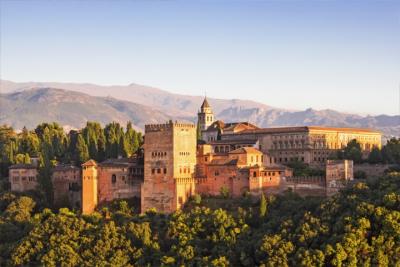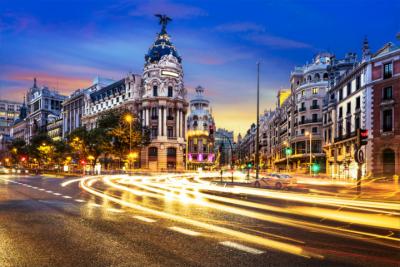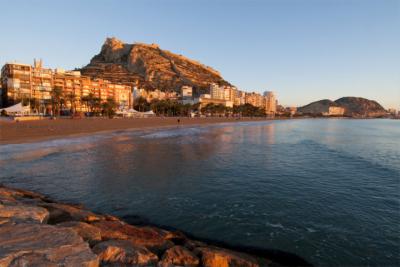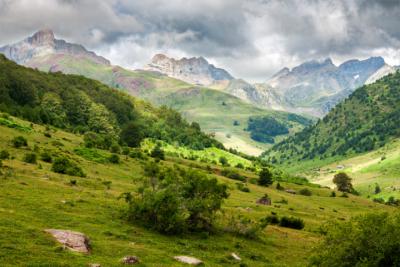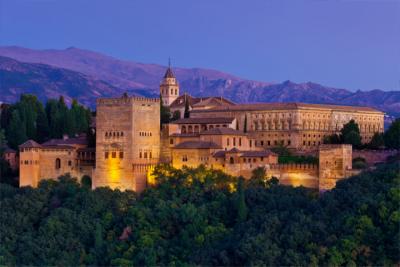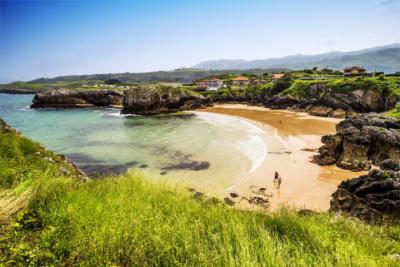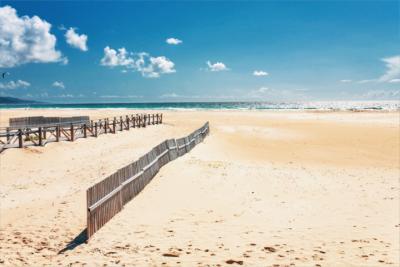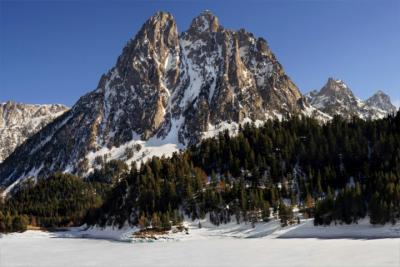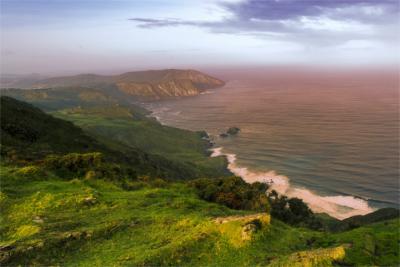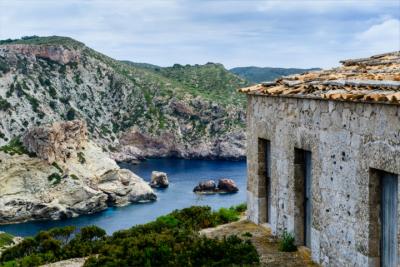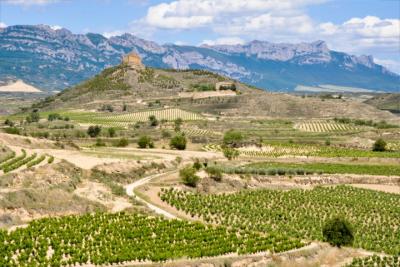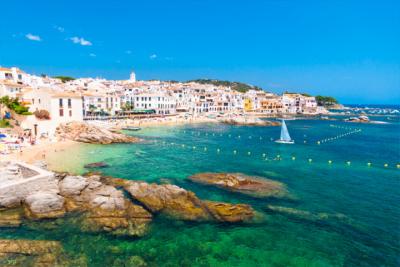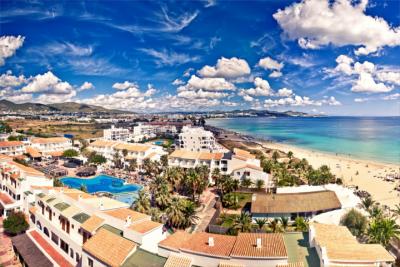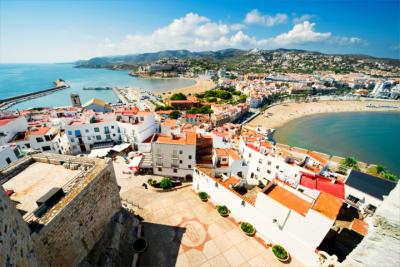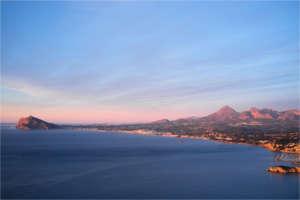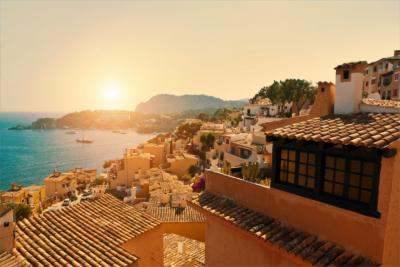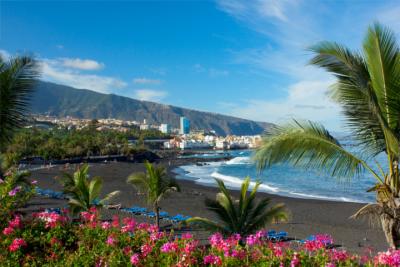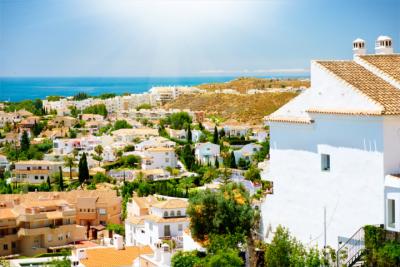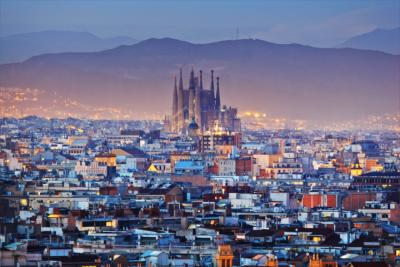Travel Offers
Travelmyne Featureprint
Distance
Catalonia – Between Mountains and Coast
Individual culture, traditions and language: Catalonia is a Spanish region which goes its own way. Besides the cultural metropolis of Barcelona and several World Cultural Heritage sites, the region fascinates its visitors with the breathtaking panorama of the Pyrenees and the Costa Brava.

Geography - 580 kilometres of Mediterranean coast
Catalonia (capital: Barcelona) is an autonomous community in the north-east of Spain and is divided into the four provinces Girona, Barcelona, Tarragona and Lleida. It borders on France and Andorra in the north, Aragon in the west and Valenica in the south-west. The region comprises about 32,100 km² of land as well as 580 kilometres of Mediterranean coast and lies south-east of the Pyrenees. Catalonia's highest mountain is the Pica d'Estats (3,143 m) in the Montcalm Massif. The region's climate is strongly influenced by the Mediterranean Sea. The summers are hot and dry, while the winters are rather mild with high precipitation.

Nature - A wild coast and the enchanting mountain panorama of the Pyrenees
The nature in Catalonia is very diverse and varied, depending on the region. You find the breathtaking high mountain range of the Pyrenees in the north, vast, flat plains in the centre and long, magical sandy beaches in the south as well as the mountainous and rocky coast at the Mediterranean Sea. Catalonia's best-known coastal areas are probably the Costa Brava and the Costa Daurada. The latter lies south of the metropolis Barcelona and offers long, fine, white sandy beaches as well as one of the greatest wetland biotopes at the Mediterranean Sea, the Ebro Delta National Park. The popular Costa Brava north of Barcelona fascinates with its harsh and steep shores and small paradisiacal bays. You also find Catalonia's most eastern point at its wild coast, the Cap de Creus. The Pyrenees cross the autonomous community from the Cap to the French border. The landscape of the high mountain range accommodates the region around the inactive Garrotxa volcanic zone - one of Catalonia's most significant conservation areas - the highest point Pica d'Estats with 3,143 metres as well as the extraordinary sandstone mountains Montserrat, which are the community's landmark. Due to the great diversity of landscapes and one of the greatest European wetlands, Catalonia has a considerably greater variety of birds than any other Spanish community. 95 percent of all species of birds of the Iberian Peninsula live here as well as 50 percent of all the types of birds which populate the region north of the Himalayas in Europe, Northern Africa and Asia.

Culture - Human pyramids and Catalan modernism
Catalonia is a region which was shaped by its chequered and eventful history. In the course of the centuries, it was under the foreign rule of the Greeks, Punics, Romans, Goths, Moors and Carolings. The Catalan population kept fighting against these foreign influences to gain independence, thereby preserving their own culture, tradition and language. This is the reason why the Catalan inhabitants tend to consider themselves a separate nation, which causes conflict with the Spanish government. There are numerous sights in Catalonia which reflect the population's singularity and historical events, several of which are part of the UNESCO World Cultural Heritage. Some examples are the Royal Abbey of Santa Maria de Poblet in Tarragona, the churches in the Vall de Boí in the province Lleida or the Monastery of Montserrat in the Pyrenees. Travellers also learn about the cultural history of Catalonia in the charming old parts of the towns Reus, Sitges, Girona with its Jewish quarter and the many Arab baths as well as Figueres, the birthplace of Salvador Dalí. In general, the region is home to many world-famous artists. Besides Dalí, Pablo Picasso, Joan Miró and Antoni Gaudí are members of the Catalan "nation". Their works are on display in the Picasso Museum (Museo Picasso) and the Joan Miró Foundation (Fundació Joan Miró) in Barcelona, for example. You can also see Gaudí's works in the capital of modernism. The Sagrada Família, Park Güell, Casa Milà or Batlló, for example, were built by this Catalan architect. A special cultural attraction and part of many great regional celebrations is not only the Catalan folk dance sardana but also the castells - spectacular human pyramids of up to ten stories, which were awarded the title "intangible World Cultural Heritage".

Experience - A varied cuisine and romantic traditions
The Catalan cuisine is as varied as its landscape. Besides fantastic wines like the sweet wine Muscat de Rivesaltes or the high-quality sparkling wine Cava, the rice dish paella is originally from this region. In addition, many vegetable dishes are combined with nuts such as the Espinacs a la catalana (spinach with pine nuts and raisins). The countless fish and meat dishes are almost always eaten with the garlic mayonaise sauce aioli. A very special and typically Catalan starter is the tomato bread "Pa amb tomaquet" (bread spread with tomato, olive oil, salt and garlic). Crema Catalana - a Catalan version of the well-known crème brûlée - is a characteristic dessert. An important element of the everyday life of the Catalan population is handicraft such as pottery and wood carving. You still find the traditional local ceramic ware in many kitchens and creative woodwork is produced in Sorède, Ceret and Le Boulou, for example, in the form of artful whips or cork products. The celebration of Sant Jordi on the 23rd of April is a kind of Catalan Valentine's Day. Sant Jordi has been the patron saint of people in love since the Middle Ages. At that time, it was common to go to the chapel of Holy George during the patronal festival, where a rose market was held. This way, a tradition emerged: couples, but also families and friends, can exchange a present (men get a book, women a rose) on the 23rd of April every year. This romantic and cultural celebration is a particularly special experience in Barcelona. As many parts of the city are filled with book and flower stalls as well as with people, the capital looks like a large outdoor book and flower shop. Another Catalan holiday is the 11th of September, the region's national day.

Activities - Swimming in the sea, hiking and skiing in the mountains
Catalonia is a great destination for both beach and hiking holidays. Different kinds of water sports like diving, sailing or surfing can be done at the Costa Dorada, Costa Barcelona or Costa Brava. The Pyrenees, on the other hand, are wonderfully suited for hiking. Well-signposted hiking trails lead travellers through impressive gorges and deep forests as well as to the Aigüestortes i Estany de Sant Maurici National Park, the only national park in Catalonia. Another worthwhile adventure is a ride on the rack railway from Ribes de Freser to Núria, Spain's only rag railway. Furthermore, visitors can do winter sports in several skiing areas in the Catalan Pyrenees.
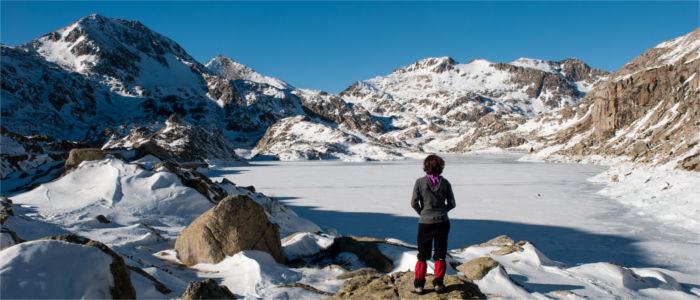
Information
The region's main airport is the one in Prat, which is about 10 kilometres away from the capital Barcelona and is used by a great number of airlines. However, many travellers arrive at the airports in Perpignan, Girona and Reuss. Besides Spanish (Castilian), Catalan - a language which is very similar to French - is spoken in Catalonia. If you want to impress the inhabitants, you should learn some expression in this Romance dialect.
Traditional folk dances, human pyramids, a delicious cuisine, scenic beaches as well as impressive mountains characterise Catalonia. The Spanish autonomous community fascinates not only with singularity, individualism and diversity but also gives the visitor an understanding of the Catalan pride of their homeland.



